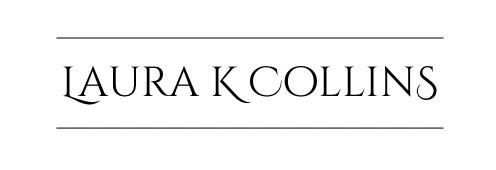How To Figure Out Your Hair Density
Hair density and hair texture are two hair type categories that commonly get confused. In this post we’ll explain what it is and help you to determine what hair density you have.
What is hair density?
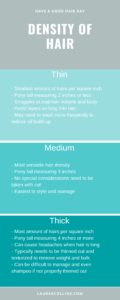
The second category in determining your hair type is density. The density of the hair is the number of hairs per square inch.
This has nothing to do with the texture, and the two are easily confused. People with fine hair can have a thick density, and people with coarse hair may have a thin density. To learn more about your hair texture, see this post here.
Typically, natural blondes have the most amount of hairs per square inch, but this is not always the case. On average, you have about 2,200 hairs per square inch. And roughly 100,000 on your whole head.
How to determine your hair’s density
A general test to determine if your hair is thin, medium, or thick is done by pulling it back into a ponytail and determining the circumference of the ponytail.
You can measure the length of the ponytail with a flexible measuring tape, or using a string and then measure the string.
- Thin Hair – If it measures 2 or less inches.
- Medium Hair Density – If it measures 2-4 inches.
- Thick Hair – If it measures at 4 or more inches.
Thin hair
Thin hair has the least amount of hairs per square inch. Similarly to fine haired gals, thin hair also struggles with keeping volume and body. Depending on how thin it is, you may even struggle with your scalp showing through.
If you haven’t always had thin hair and think you may be beginning to lose hair, read my post here. I give explanations as to what could be causing it as well as a variety of solutions depending on your situation.
How to care for thin hair
- Texturizing should be kept to a minimum with thin hair and done only in specific areas that will accentuate a cut or style. For example men thinning on the top need their sides texturized to blend.
- Using texture sprays will help to add fullness and make the hair appear thicker.
- You need to be very careful when brushing thin hair to avoid causing breakage and taking out more hairs from the scalp. For more tips on brushing check out my post here.
- You can use color sprays to cover your scalp if it shows through the top of your hair.
- Take vitamins (biotin) and make sure you eat a healthy diet to promote hair growth.
Best hair styles for thin hair
If you have long thin hair then I don’t recommend many layers. Layers can make the bottom of your hair appear thinner than it already is.
If you wear a short or medium cut, layers can help to increase volume. Bobs work very well for this hair type.
Extensions can be a great option if you want to have long hair without your ends appearing straggly. Towards the end of this post about thinning hair, I give several recommendations of extension options.
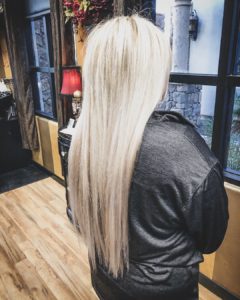
Best hair products for thin hair
Thin hair struggles with keeping body and not appearing stringy. You can help this by using products that add texture and substance to the hair.
There are also several products to help with the scalp showing through if that is an issue for you.
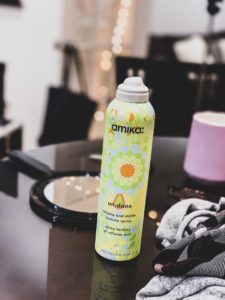
***Since I’m sharing the products that I love to use with you guys, this page includes affiliate links to these products. If you take action and purchase a product through clicking one of my links, I’ll make some commission money from it at no extra cost to you. This enables me to be able to continue giving you awesome hair tips, so thanks! ***
- Pureology Pure Volume Shampoo and Conditioner – This shampoo and conditioner will give your fine hair the volume that it lacks! It’s made for color treated hair and will not weigh your hair down.
- Amika Un.Done Texture Spray – This is my favorite texture spray. As Amika says, it’s “sexy-in-a-bottle” and they aren’t lying. It adds volume and texture to give you the ultimate “un-done” look. This spray is used on dry hair only.
- Batiste Dry Shampoo – This is not a thickening product, but I will say that dry shampoo definitely does add fullness to limp hair. They have different options of colored dry shampoos, which can be sprayed at the scalp to cover gray hairs or hide your scalp from showing through.
- Aquage Uplifting Foam – This root lifter helps to give you volume which is a common problem with fine hair. Apply it only to your root in the area you’re looking for more lift, and blow-dry and style as usual.
- Aquage Thickening Spray Gel – This product is a spray gel that adds fullness and volume to your hair. It’s best for using on wet hair before blow drying.
Medium Density Hair
A medium density hair type is generally the most desired. You have enough hair on your head to get some volume but not so much that it’s giving you headaches
Best hair styles for medium density hair
This hair type has the most versatility when choosing cuts and styles. Depending on the hair texture, this hair can be worn long or short without any issue.
Texturizing will help shape this hair, but it is possible to over-do it especially with fine hair. Your stylist should texturize certain areas of your cut but be more careful around the front hairline. I have had a stylist over-texturize my hair and create gaps where hair should have been left alone.
As long as this hair is kept healthy, it should have no problem growing long. If you get headaches, ask your stylist to thin it out in the areas that feel extra heavy and try not to keep it in tight pony tails.
Best hair products for medium density hair
There are no strict rules with medium density hair because it has the best of both worlds. As mentioned with medium textured hair, you may want to consider your other hair categories when selecting products. Here are a few of my favorite basic products that work well with medium density hair.
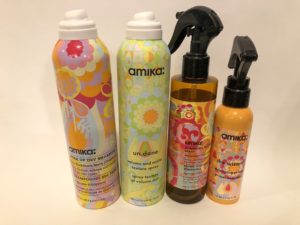
- Pureology Hydrate Shampoo and Conditioner – Replenishes lost moisture in your hair and smells AMAZING. All of my clients ask me what I’m using on them when I use this. I keep it at my backbar and actually use it on 90% of my clients!
- Amika Perk Up Dry Shampoo – The best dry shampoo on the market. Doesn’t leave a residue, absorbs oils, and smells great. Spray at your root area, rub in with your fingers, and style.
- Amika The Shield – This is a heat-activated spray that protects your hair from heat tools and humidity. Spray 8-10 inches away.
- Pravana Intense Therapy Leave In – This leave in conditioner serves as a thermal protector, UV protector, minimizes effects of chlorine, replenishes lost moisture, repairs and strengthens damaged hair, detangles, and reduces blow-dry time. I LOVE this stuff.
Thick hair
Thick haired clients have the most amount of hair per square inch. People with this hair type frequently complain of headaches due to the stress on their scalp from the weight of their hair.
They also leave hairs EVERYWHERE they go because they loose a lot more in a day than people with thinner hair types. This is normal, you have a lot more hair to loose!
How to care for thick hair
- This hair not only needs to be texturized, but also thinned out regularly so it’s easier to deal with and less stress on the scalp.
- If you have extremely thick hair, make sure you’re thoroughly rinsing the shampoo out. I once had a client that had so much hair, she had a really tough time shampooing and drying it herself. Her scalp was also frequently irritated on the back of her head because it was difficult to get water to penetrate all of her hair!
- I dont recommend high pony tails for thick hair because the weight of the hair will tug on the elastic rubber band which can not only cause breakage but will also give you headaches.
Best hair styles for thick hair
Thick hair can be difficult to deal with. I have seen clients that have enough hair for 6 people!
If there is too much hair, keeping it shorter or layered will help with the headaches. I also recommend going in to get it thinned out on a monthly basis, no matter what length you keep it at.
Keep in mind that when you have very thick and long hair, you will more than likely have to pay more when having your hair done. Make sure that you tell your stylist when booking your appointment so that she blocks off enough time and doesn’t run behind.
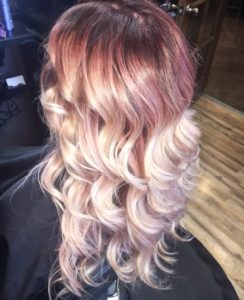
Best products for thick hair
Thick hair doesn’t have any problem getting volume and it certainly doesn’t need anything to make it appear thicker, so you can be pretty versatile when choosing your products.
I would aim your focus of product selection on one of the other hair type categories. But here are a few of my favorites that work well with thick hair!
- Pureology Hydrate Shampoo and Conditioner – Replenishes lost moisture in your hair and smells AMAZING. All of my clients ask me what I’m using on them when I use this. I keep it at my backbar and actually use it on 90% of my clients!
- Aquage Silkening oil treatment – This is used for blow-drying, anti-frizz, anti-humidity, heat protection, and works wonders as a smoothing serum. It even cuts your blow-dry time down!
- Amika Perk Up Dry Shampoo – The best dry shampoo on the market. Doesn’t leave a residue, absorbs oils, and smells great. Spray at your root area, rub in with your fingers, and style.
- Pravana Intense Therapy Leave In – This leave in conditioner serves as a thermal protector, UV protector, minimizes effects of chlorine, replenishes lost moisture, repairs and strengthens damaged hair, detangles, and reduces blow-dry time. I LOVE this stuff.

Conclusion
To conclude, understanding your hair density will help you determine what hair styles will work best for you, as well as what products you should be using.
Your hair density refers to the amount of hairs per square inch on your head. This is not to be confused with hair texture, which refers to the diameter of each individual hair strand.
By measuring your pony tail circumference, you can determine if you have a thin, medium, or thick hair density.
For thin hair, you’ll want to aim for short and medium lengths with minimal layering and texturizing to maintain as much thickness as possible. You can utilize thickening products to help add some fullness to your hair. Extensions can also be helpful for wearing long hair so that the ends don’t appear too stragily.
For medium hair, you have the best of both worlds. You can wear your hair at any length without any problems, although you may need a bit more texturizing than those with thin hair.
For thick hair, you may get headaches when keeping your hair long with minimal layers. To avoid these headaches, we recommend layering as well as getting your hair thinned out monthly to reduce the weight of your hair. We also recommend using silkening products that can help to reduce your blow drying time.
If you found this post helpful, check out this post on determining your hair texture.
If you have any further questions for me on this topic, be sure to leave them for me in the comments. And as always, Have A Good Hair Day!
